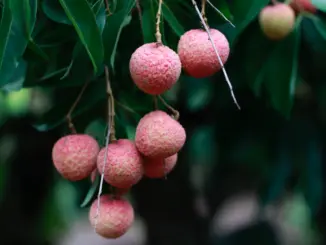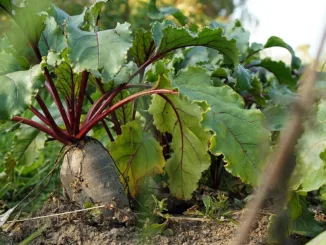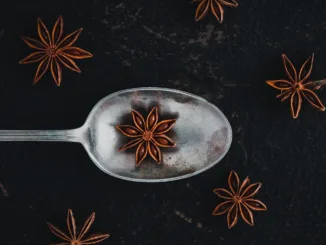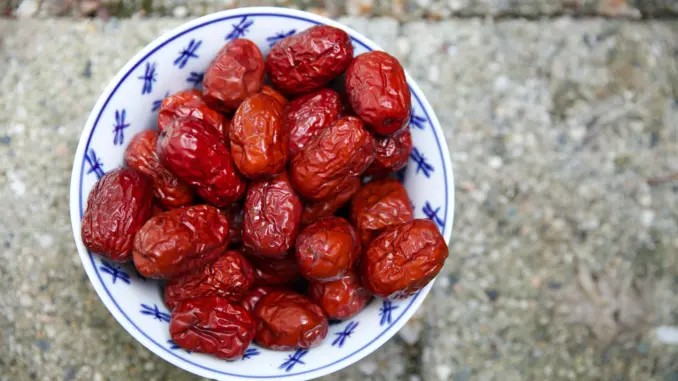
Native to China, jujube is a superfruit with a multitude of nutritional benefits. We explore its history, how it’s cultivated, and ways cafés are using it in their menus.
BY EMILY JOY MENESES
BARISTA MAGAZINE ONLINE
Featured photo by Mona Mok via Unsplash
Also known as the Chinese date or red date, jujube has been a foundational part of Eastern cuisine and healing practices for thousands of years. Now jujube is beginning to find a place in the coffee world. Today, we explore all things jujube: how and where the fruit is cultivated, how it’s traditionally consumed, and ways coffee shops are making use of it on their menus.
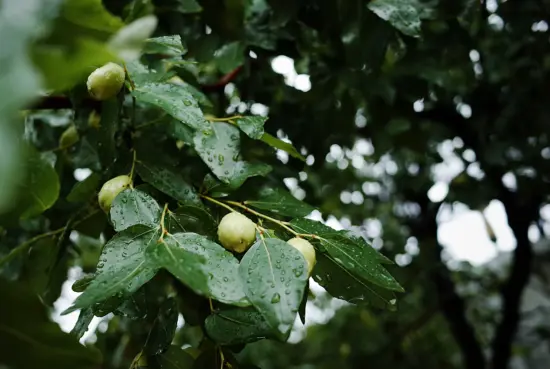
Jujube Cultivation
The jujube tree is one of the world’s oldest cultivated fruit trees. This report shows that domestication of the tree can be traced as far back as 7,000 years ago to the Neolithic Age. The fruit is mentioned in several ancient texts. Most notably, it’s mentioned in The Book of Songs, China’s earliest collection of poems, which contains works dating from the 11th to the seventh centuries B.C.E.
The jujube is native to China and remains commonly grown there. It’s also cultivated in various places around the world today—including Russia, Africa, Europe, the Middle East, and the U.S. The jujube tree needs full sun, and does best in warm, dry climates. However, it can also survive in winter temperatures as low as -20 degrees Fahrenheit. The jujube harvesting season varies from location to location. The fruits typically ripen throughout July and August and are harvested from late summer to early autumn.

Health Benefits, Spiritual Meaning, and Traditional Consumption
For centuries, jujube has been an important part of Chinese herbalism, revered by many for its nutritional value and healing benefits. The superfruit is rich in potassium and vitamin C. According to registered dietician Sarah Thomsen Ferreira, it’s also a great source of phenolic compounds, which are potent antioxidants that help fight the effects of free radicals throughout the body. Thus, the fruit helps combat inflammation in the body, promotes heart, liver, and skin health, and boosts cognitive function, among other benefits.

According to Chinese traditional medicine, jujube helps generate Qi (life force energy). It is historically believed to symbolize wealth, abundance, and fertility. You can consume the fruit fresh or dried and use it to make tea. People often use it in combination with other herbs, like ginseng or huang qi (astragalus).
Jujube in Tea and Coffee
While jujube is typically consumed in tea (cue the Korean drink daechu-cha), we’re seeing it pop up in various cafés around the globe. But the fruit is still somewhat rare in the coffee world. Some examples of jujube at cafés are Indonesian Djournal Coffee’s iced jujube macchiato and Los Angeles-based Cafe de Mama’s jujube latte. The sweet, tart, and honey-like flavor of jujube pairs perfectly with milk-based drinks. It adds a touch of fruity yet earthy flavor to each coffee beverage.

Jujube has a variety of health benefits and a rich history that stretches back thousands of years. This ingredient can bring immense value to both home recipes and café drinks.
Want to try it for yourself? You can find fresh jujube at your local Asian markets, or buy it dried online!
ABOUT THE AUTHOR
Emily Joy Meneses (she/they) is a writer and musician based in Los Angeles. Her hobbies include foraging, cortados, vintage synths, and connecting with her Filipino roots through music, art, food, and beverage.

READ THE LATEST BARISTA MAGAZINE
Out now: It’s the October + November 2023 issue of Barista Magazine! Read for free with our digital edition. And for more than three years’ worth of issues, visit our digital archives here.
Get a hard copy of the magazine through our online store, or start a subscription for one year or two.


